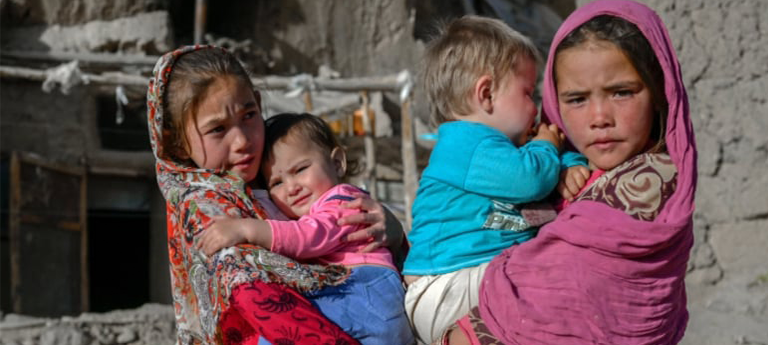UNITED NATIONS: Nearly half of Afghanistan’s population is facing acute hunger, advised aUN-backed report published on Monday.
“ High acute food instability persists across Afghanistan, as a combination of a collapsing frugality and failure is depriving nearly 20 million Afghans of food,” according to the rearmost Integrated Food Security Phase Bracket (IPC).
The analysis was conducted in January and February by IPC mates, which include the UN Food and Agriculture Organisation (FAO), family agency the World Food Programme (WFP), and UN-backed NGOs.
The report places about6.6 a million people, out of a population of 40 million, in its exigency (IPC 4) order and 13 million in an extremity or phase 3 order. The report points out that the UN and other agencies have handed a significant quantum of philanthropic food backing but “ Afghanistan’s food security situation remains largely concerning”.
The situation has been aggravated by profitable decline and high food prices.
According to the report, about 38 percent of the population has been targeted for food backing, yet between March and May half of the country was passing high and critical situations of acute food instability. Among these, about6.6 a million people face large food gaps and/ or employ exigency managing strategies to pierce food.
For the first time since the preface of IPC in Afghanistan, catastrophe conditions (IPC Phase 5) were detected for people in the fiefdom of Ghor, one of the most remote, vulnerable businesses.
The report called for immediate action to help further deterioration. Compared to the former period, November 2021 to March 2022, which classified22.8 M people in IPC Phase 3 and over, the reduction of the population facing high and critical situations of acute food instability has been minimum.
The report, still, conceded that the increased capacity of philanthropic actors to reach heirs in vulnerable pastoral areas compared to the peak of the downtime season is playing a big part in furnishing food to the most vulnerable.
The study linked famines, rising food prices, the moping impact of decades of conflict, and the profitable collapse performing to the political transition as the main factors for this hunger.
The surveyors point out that between the coming month and November, crops will allow a minimum enhancement in food vacuity and access, reducing the number of people facing acute food security from19.7 a million to18.9 million. Overall, 13 million will probably be in Crisis (IPC Phase 3) and 6 million in Exigency (IPC Phase 4).
With below-average prospects for the crop in the utmost of the country, the report warns that several factors would further hinder the foreseeable seasonal enhancement. Among these, numerous are abecedarian socio-profitable changes, similar to the anticipated compression of the GDP from 20 to 16 billion USD this time. Other factors include the lack of development systems; the dislocation of the force chain and the further increase in food, energy, and fertilizer prices linked to the ongoing Russia-Ukraine conflict.
The Ukraine extremity is adding up to unknown affectation on the country’s position and the remaining warrants on the de facto authorities are making effects worse.
At the ménage position, the situation is compounded by the read reduction of Philanthropic Food Backing after the month of May. The backing is anticipated to drop from 38 per of the population entering on average two-thirds food portion in the current period, to eight percent in the June-November protuberance due to lack of backing.






